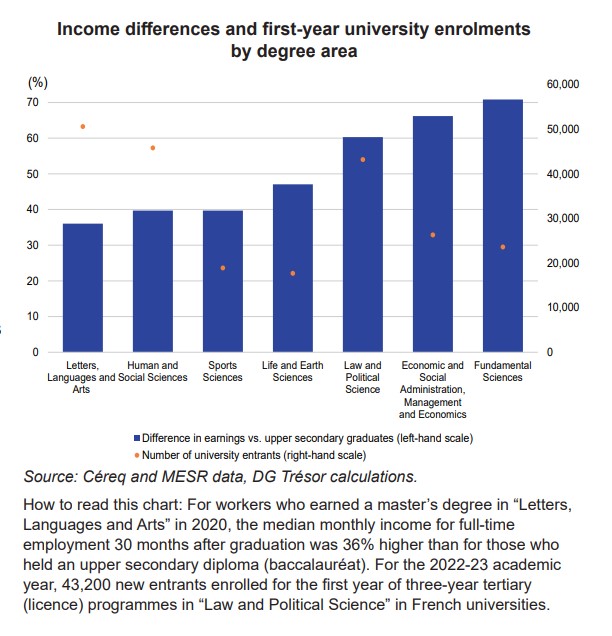Economic Implications of Guidance and Orientation in Education
Effective guidance and orientation of young people to appropriate degree programmes is essential for reducing student failure in higher education and ensuring that students acquire skills aligned with the economy's needs.
Effective guidance and orientation of young people to appropriate degree programmes is essential for reducing student failure in higher education and ensuring that students acquire skills aligned with the economy’s needs.
Shortcomings in the guidance and orientation process can lead to discontinuities in students’ studies, leading to extended time to earn a degree and to the acquisition of skills that are misaligned with labour market demand, resulting in reduced employability and lower lifetime earnings. In macroeconomic terms, this means structurally higher unemployment, more unfilled jobs and lower total factor productivity (TFP).
At the individual level, educational investment involves a trade-off between personal preferences, expected gains and the costs of education (including potential income foregone associated with the time spent in education). However, the guidance currently available to French secondary school students is not based on comprehensive, objective information to the extent that would be both feasible and desirable. Further, the allocation of student places in higher education does not sufficiently respond to current and expected labour market conditions (see Chart).
Improving the effectiveness of the guidance and orientation system would require greater visibility for certain academic and vocational tracks, as well as greater confidence by students that they can access these programmes. Paths to improving the economic efficiency of guidance and orientation programmes include: disseminating clear and comprehensible information; providing greater human support in schools, particularly through the involvement of role models; and ensuring a better fit between the allocation of places in degree programmes and the needs of the labour market.
